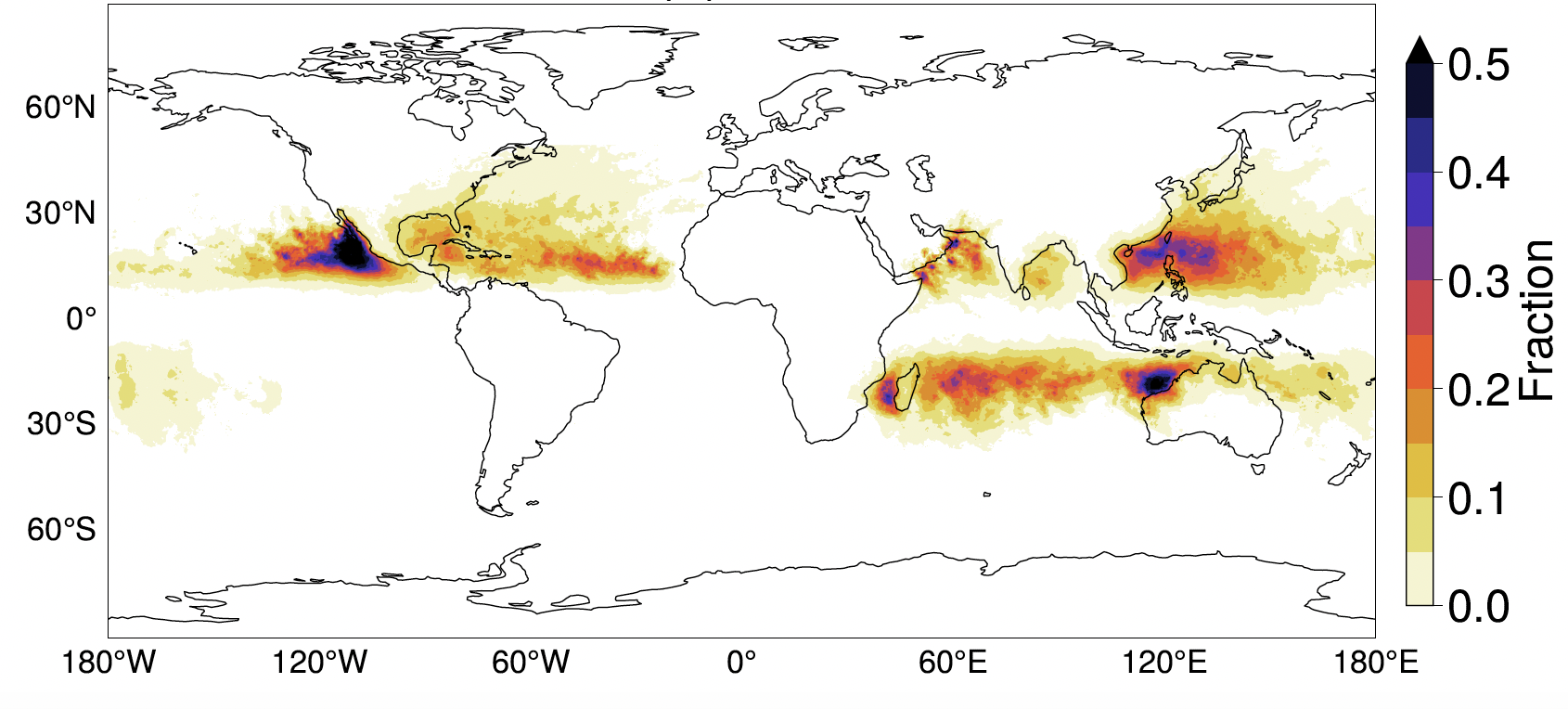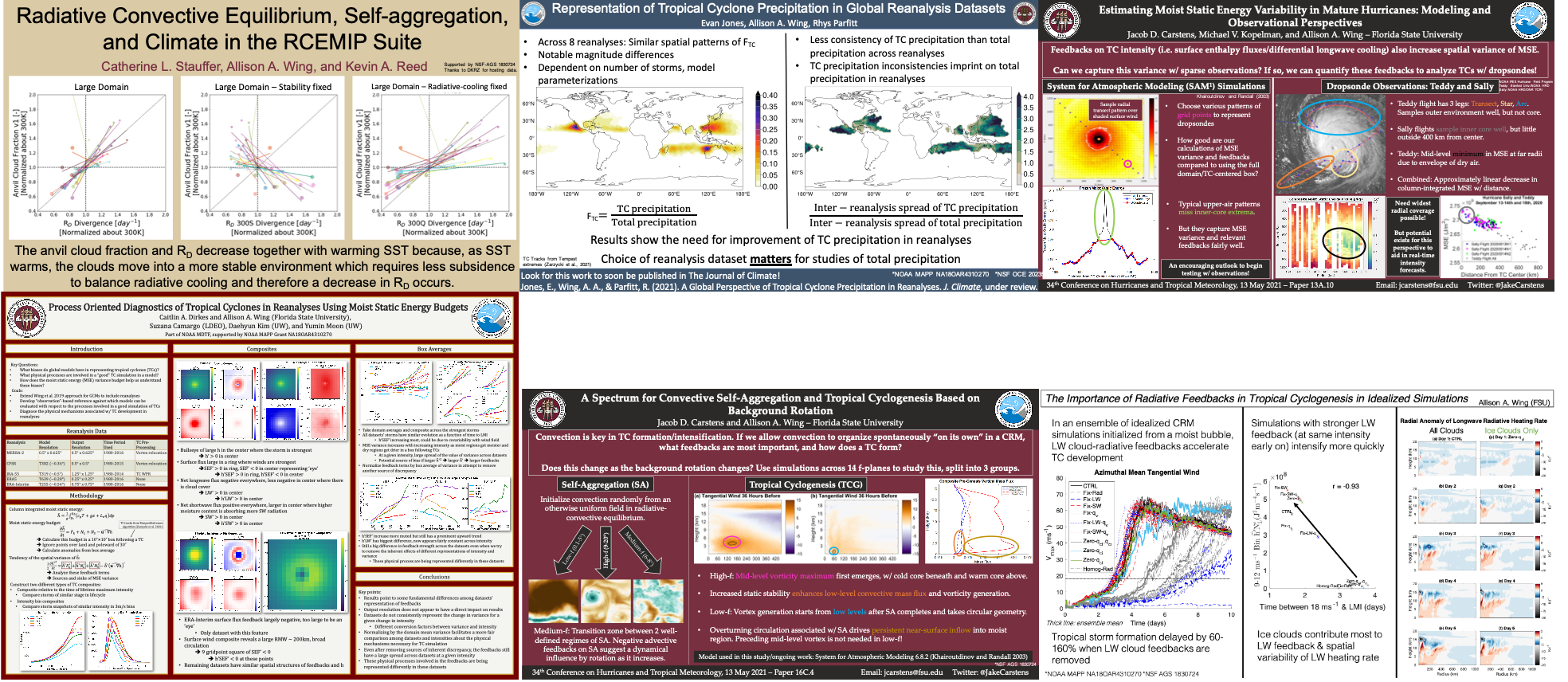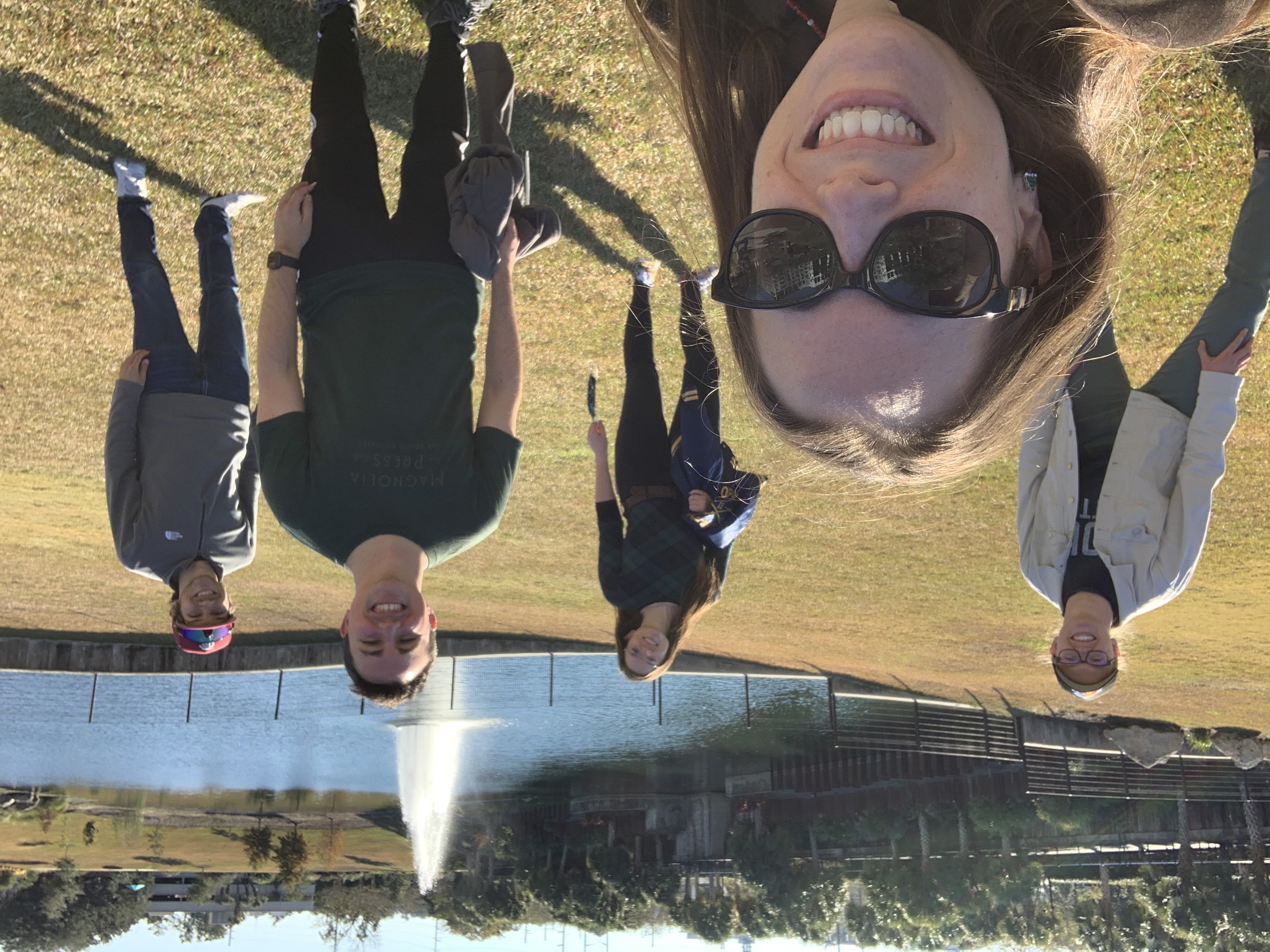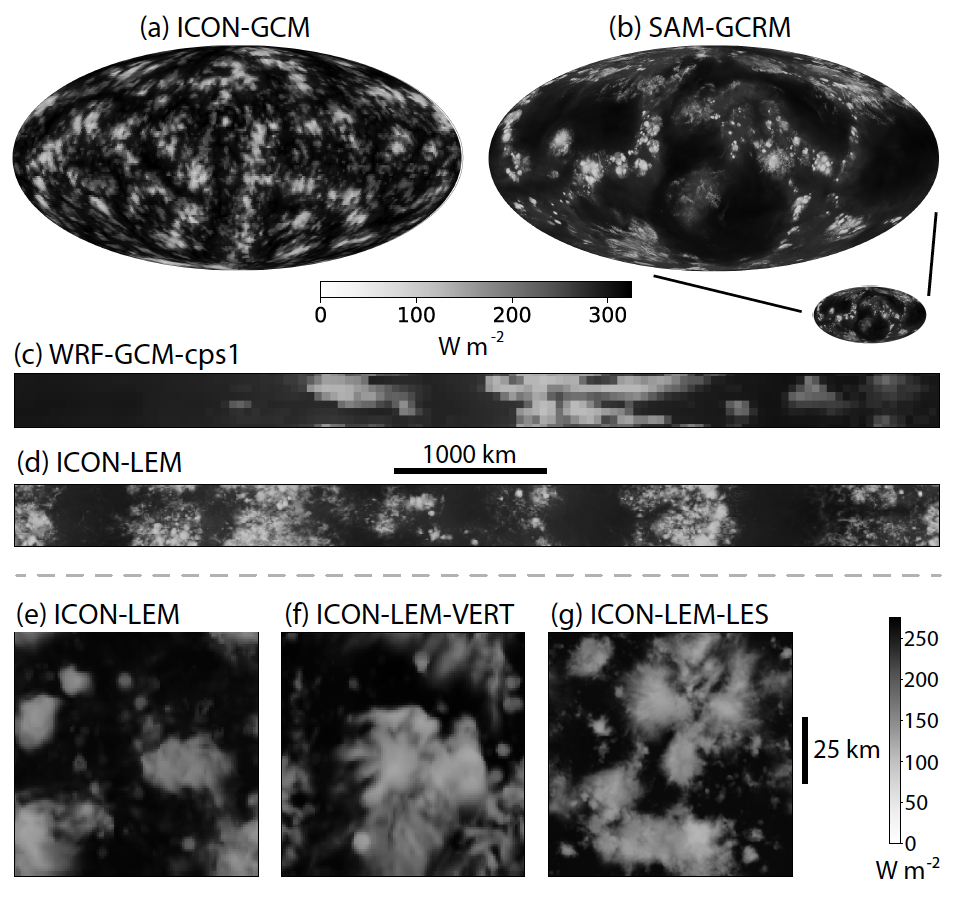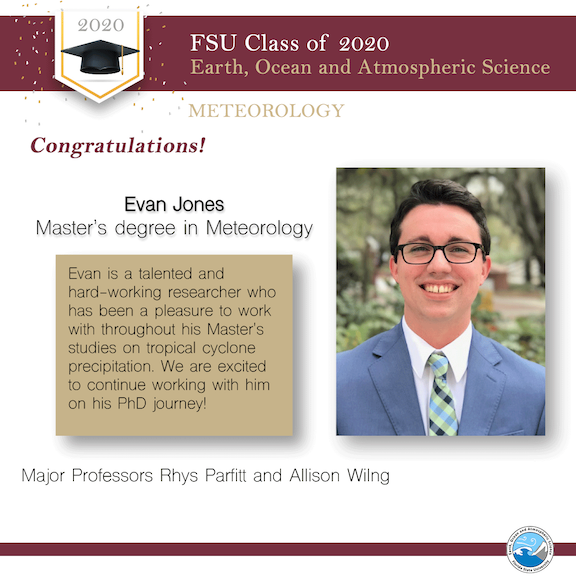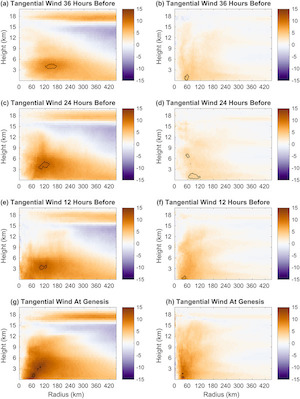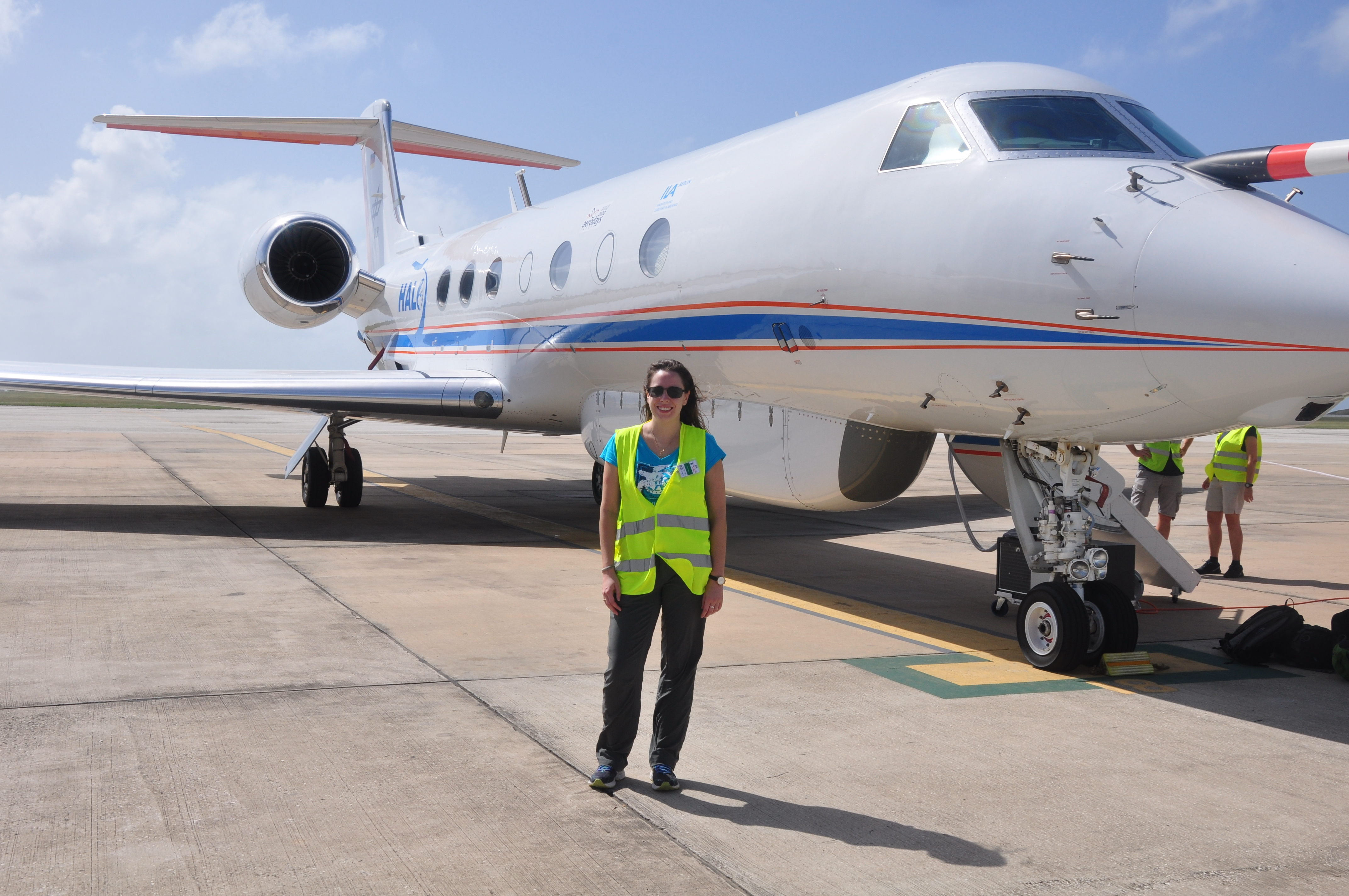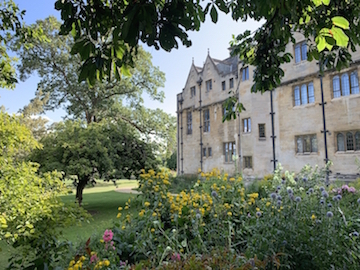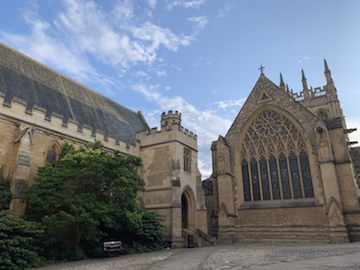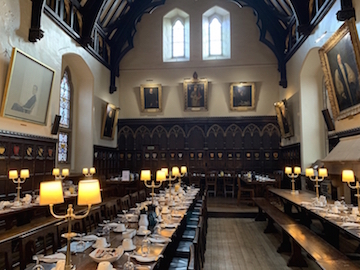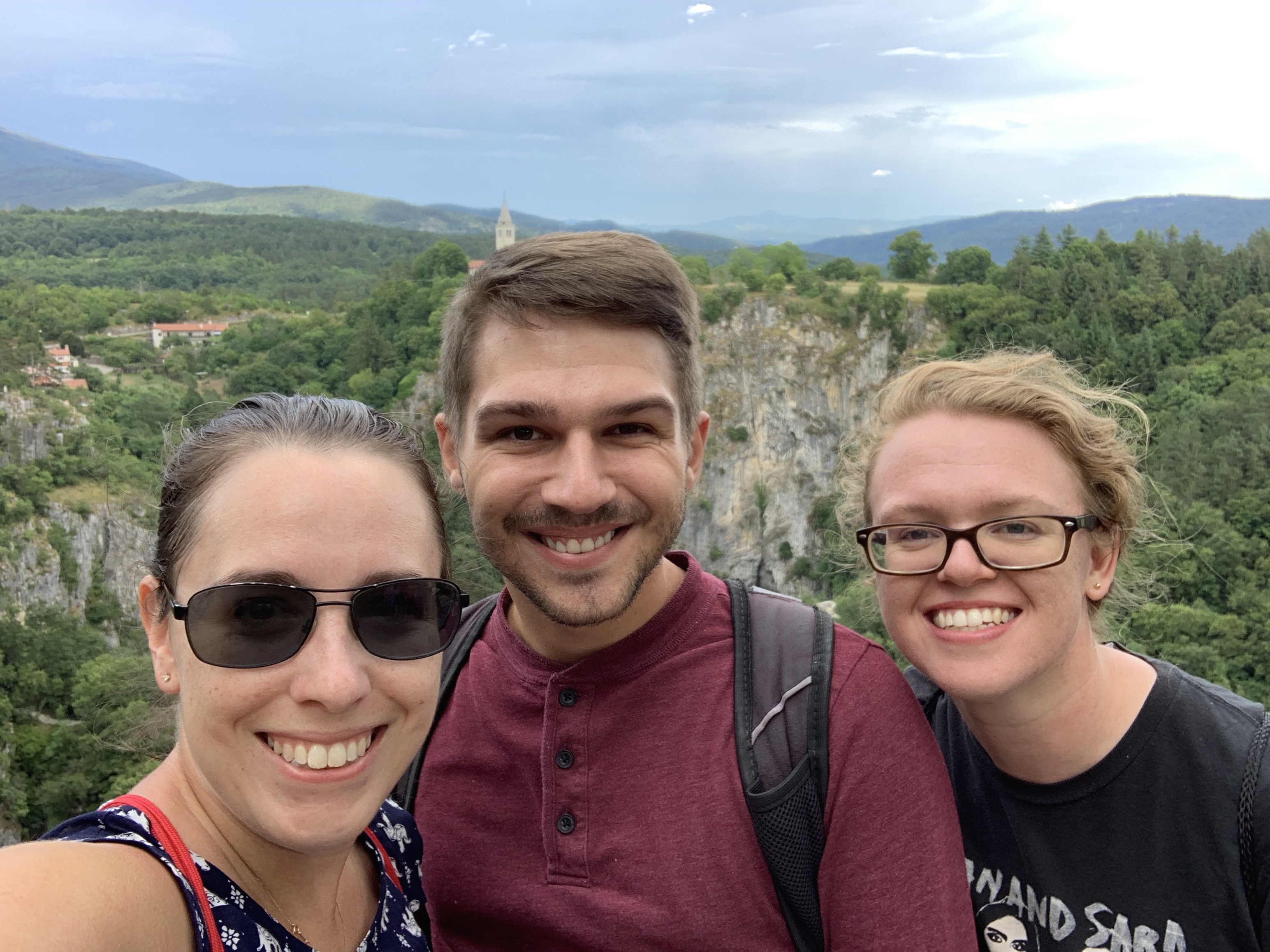Congratulations to Evan Jones, Ph.D. student co-advised by Prof. Rhys Parfitt and Prof. Wing, on the publication of his first paper! Based on Evan's masters research, the paper is titled "A Global Perspective of Tropical Cyclone Precipitation in Reanalyses" and was published in the Journal of Climate. Evan examined the spread in climatological TC precipitation across 8 different reanalysis datasets. He found that while the reanalyses captured similar spatial patterns of TC precipitation and its contribution to annual precipitation, there was a large spread across datasets. In particular, the spread across reanalyses in TC precipitation was larger than the spread in total precipitation, and was larger for higher intensity TCs. Compared to satellite observations, reanalyses underestimate annual TC precipitation, because they produce too few TCs [the figure above shows the climatological mean fraction of annual precipitation contributed by TCs in TRMM satellite data]. On a per TC basis, for a given TC intensity, reanalyses overestimate the area-average TC precipitation rates for most intensity bins. Evan's results show that the choice of reanalysis dataset is important and highlight the need for continued improvement in the representation of tropical cyclones and their precipitation in reanalyses in order to improve representation of overall precipitation.
Read moreWelcome to Tsung-Yung Lee, who joins the group as a new Ph.D. student. Tsung-Yung received his B.S. and M.S. degrees in Atmospheric Science from National Taiwan University. For his masters research, he worked with Prof. Chun-Chieh Wu to study the impact of environmental low-level flow on tropical cyclone intensity under moderate deep-layer shear, using idealized WRF simulations. For his Ph.D., Tsung-Yung will study the role of cloud-radiative feedbacks in tropical cyclone development using satellite observations (supported by Prof. Wing's NASA grant). Welcome, Tsung-Yung!
Congratulations to Caitlin Dirkes, who successfully defended her masters thesis on June 24, 2021! Her thesis was titled "Process Oriented Diagnostics of Tropical Cyclones in Reanalyses Using Moist Static Energy Budgets", work which was supported by the NOAA Climate Program Office's Modeling, Analysis, Predictions and Projections program. Caitlin will be starting a new position as a Meteorologist at the National Weather Service in Memphis, TN. Congrats Caitlin!
This week is the American Meteorological Society's 34th Conference on Hurricanes and Tropical Meteorology, held virtually, and Wing group is well represented!
- Monday May 10, 3:05 PM: Catherine Stauffer presents Radiative Convective Equilibrium, Self-Aggregation, and Climate in the RCEMIP Suite.See more
- Thursday May 13, 10:45 AM: Evan Jones presents Representation of Tropical Cyclone Precipitation in Global Reanalysis Datasets.See more
- Thursday May 13, 10:50 AM: Jake Carstens presents Estimating Moist Static Energy and Surface Enthalpy Flux Variance in a Mature Hurricane: Modeling and an Observational Case Study, with contributions also from Michael Kopelman. See more
- Thursday May 13, 2:00 PM: Caitlin Dirkes presents Process Oriented Diagnostics of Tropical Cyclones in Reanalyses Using Moist Static Energy Budgets.See more
- Thursday May 13, 3:20 PM: Jake Carstens presents A Spectrum for Convective Self Self-Aggregation and Tropical Cyclogenesis Based on Background Rotation.See more
- Thursday May 13, 3:45 PM: Prof. Wing presents The Importance of Radiative Feedbacks in Tropical Cyclogenesis in Idealized Simulations. See more
I'm thrilled to announce that I have been selected to receive a NASA New (Early Career) Investigator Award! The NASA New (Early Career) Investigator Program in Earth Science supports scientific research and career development of scientists early in their careers. NASA’s Earth Science Division emphasizes the use of space-based remote sensing to advance scientific knowledge and supports research to improve weather forecasts including forecasts of extreme weather like tropical cyclones.
We do not have a complete understanding of the process of tropical cyclone (TC) development and intensity forecasts in particular still need improvement. Recent work suggests that cloud-radiative feedbacks are critical to TC development. Deep convective clouds locally warm the TC relative to its surroundings, which promotes moistening and rising motion and strengthens the overturning circulation of the developing TC. However, there has been limited observational analysis of these feedbacks, so further exploration has the potential to yield critical improvements in TC prediction. This award will support a research project in which I plan to use satellite observations of cloud content, moisture, and radiative fluxes in the vicinity of tropical cyclones to estimate the TC cloud-radiative feedback. In particular, we will use data from CloudSat (a space-based cloud radar) and other A-Train sensors, in which A-Train is a constellation of satellites that provide a synergistic view of atmospheric properties. We will also validate the TC cloud-radiative feedbacks in NASA global model and reanalysis products against the observational estimate.
Read moreLast week, our group got together in person for the first time since late January 2020 - more than 10 months! Normally we have group meetings, group lunches, etc... but COVID-19 has pushed everything to Zoom. But with 2020 finally coming to a close and us all in need of a mood booster, we had a socially-distanced get-together outdoors on a bright, sunny, Tallahassee "winter" day in Cascades Park.

We had lots to celebrate since we last saw each other! In 2020, Caitlin joined the group and is on track to complete her M.S. in 2021. Evan and Catherine both recieved their M.S. degrees and both passed the PhD preliminary exam, advancing to PhD candidacy. Jake's first paper was published in May, Catherine's first paper was published in July, and Evan recently submitted his first paper. UROP student Michael Kopelman (not pictured) also joined the group in Fall 2020. These are all great achievements under normal circumstances, but are even more special because of the difficulties of working remotely, battling social isolation, and managing the other restrictions COVID has placed upon us. Congratulations to everyone on their achievements!
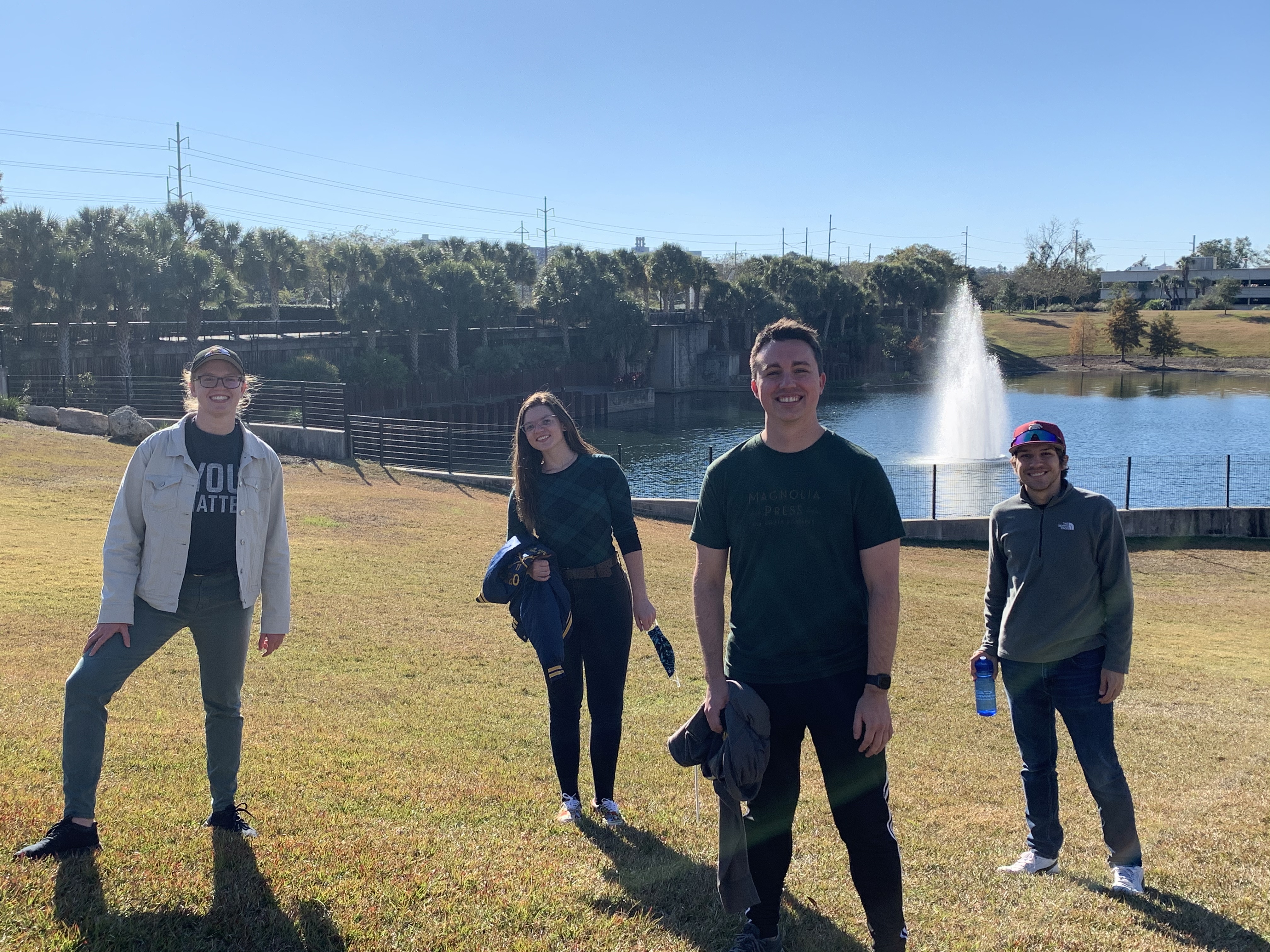
A pair of papers recently published in AGU's Journal of Advances in Modeling Earth Systems feature the first results from the RCEMIP project, an international comparison of 30 weather and climate models lead by Prof. Wing. The first paper, "Clouds and convective self-aggregation in a multi-model ensemble of radiative-convective equilibrium simulations" presents an overview of the RCEMIP ensemble. We found that models differ widely in their representation of tropical clouds and humidity, with wide spreads amongst both models with explicit and parameterized convection. However, we did find a few robust results. Most models agree that the coverage of high clouds associated with thunderstorms shrinks as climate warms, and models agree that when convection is more clustered, the environment is drier and warmer, with fewer high clouds. This paper benefited from enormous contributions from Ph.D. student Catherine Stauffer - congratulations to Catherine on her first publication!
The second paper, in collaboration with Dr. Tobias Becker (currently a fellow at ECMWF, formerly of the Max Planck Institute for Meteorology), investigates the reasons for the spread in climate sensitivity across the RCEMIP ensemble. We found that the spread across models in their climate sensitivity can be explained by how shallow clouds change with warming and how convective aggregation changes with warming. Models with parameterized convection were found to have lower climate sensitivites than those with explicit convection because models with parameterized convection had more of an increase in convective aggregation with warming. Overall, there is no consensus among models in how aggregation changes with warming, though. This paper was featured in a research spotlight in Eos: New Insights into Uncertainties About Earth’s Rising Temperature.
I also recently discussed the RCEMIP project and new results with Katinka Bellomo on her "The Climate Academy" podcast. This work was also featured by the FSU College of Arts and Sciences and FSU News.
Read moreProf. Wing publishes new paper on acceleration of TC development by cloud-radiation feedback in PNAS
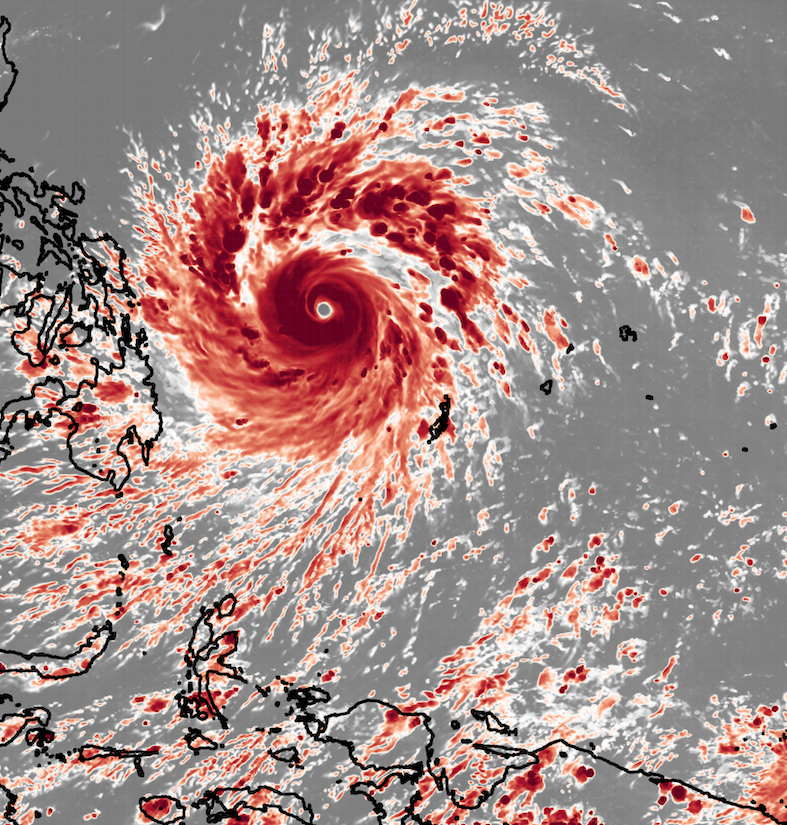
In collaboration with James Ruppert (Penn State), Xiaodong Tang (Nanjing University), and Erika Duran (University of Alabama in Huntsville/NASA SPoRT Center, Prof. Wing published a new paper on "The critical role of cloud-infrared radiation feedback in tropical cyclone development" in the Proceedings of the National Academy of Sciences. We found that an infrared radiation feedback from clouds accelerates tropical cyclone development. Deep convective clouds trap outgoing longwave radiation, creating a localized greenhouse effect that traps heat and warms the atmosphere in the developing storm. This local warming causes rising motion in the storm, helping to saturate the atmosphere and enhance the overturning circulation, converging angular momentum. This all shortens the time it takes the tropical cyclone to form. In WRF simulations of Hurricane Maria (2017) and Super Typhoon Haiyan (2013), when we removed the cloud-radiation feedback, the storms either formed more slowly or did not form at all. Since there is usually only a limited window of time with favorable conditions for tropical cyclone formation, the acceleration of storm development by the cloud-radiation feedback means it may be instrumental to the development of many intense tropical cyclones. In short, the cloud-radiation feedback matters for tropical cyclones! We need to study it more closely and look to it as an avenue for improving tropical cyclone prediction.
WCTV did a story on the new study on their evening news: "Research: ’Cloud greenhouse effect’ can help tropical cyclones develop". The paper was also highlighted as an "Editors' Choice In Other Journals" in Science, 270 (6518), 806-807.
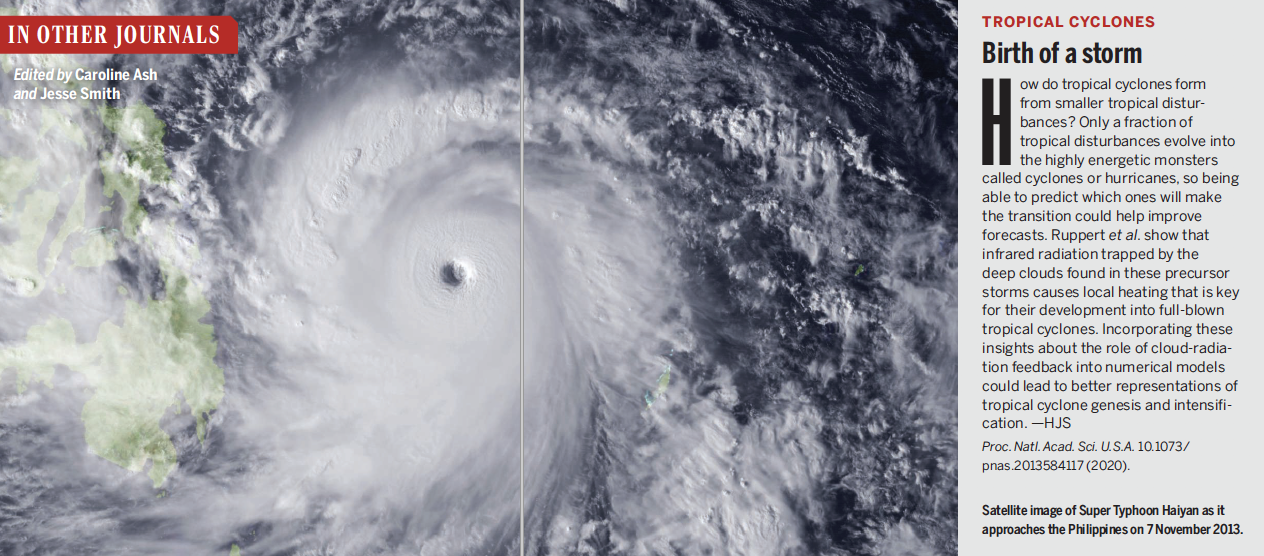
Shannon Shields, who graduated with her M.S. in 2019, published her M.S. research in Geophysical Research Letters, titled "A Global Analysis of Interannual Variability in Potential and Actual Tropical Cyclone Intensities". Dr. Daniel Gilford (Rutgers University) collaborated on the study. The paper examines the correlation between interannual variability of potential intensity, which is the maximum possible intensity a tropical cyclone can reach or the theoretical “speed limit” of tropical cyclone intensity, and the actual intensity of tropical cyclones across all global ocean basins. It study also investigates the factors contributing to this variability via sea surface, upper tropospheric and lower stratospheric temperatures. The three most important findings of the paper were:
- Year-to-year, the intensity of typhoons in the West Pacific is correlated with potential intensity, so that theory has a lot of utility for studying storms in that basin.
- Both warm sea-surface temperatures and cold lower stratospheric temperatures influence the year-to-year variability of potential intensity.
- Correlations between actual hurricane intensities and potential intensity improve over longer time periods, highlighting how the theory can inform changes in hurricane intensity over sufficiently long periods (longer than a few years, to decadal and multi-decadal time scales).
Congratulations to Evan Jones, who successfully defended his masters thesis on June 29, 2020! Evan is co-advised by myself and Prof. Rhys Parfitt and his thesis was titled "Representation of tropical cyclone precipitation in global reanalysis datasets." We are excited that Evan is staying at FSU to pursue his PhD!
Read moreWe are excited to announce the first student publication to come out of the Wing group! PhD Student Jake Carstens led a paper that investigates tropical cyclogenesis from self-aggregated convection in numerical simulations of rotating radiative-convective equilibrium He used idealized numerical simulations to show how self-aggregation of convection could lead to hurricane formation at both low and high planetary rotation rates - but with different pathways to formation! In the high-f pathway (left hand side of plot above), the spontaneous formation of a mid-level vortex facilitates the spin-up of a TC. However, in the low-f pathway (right hand side of the plot above), the convection first self-aggregates into a non-rotating cluster witn strong low-level inflow. This low-level inflow enables the spin-up of a TC, without the need for a mid-level vortex to form first. In order for a TC to form, what is needed is angular momentum convergence by low-level radial inflow, regardless of whether that inflow is first generated by self-aggregation into a non-rotating cluster or the spontaneous development of a mid-level vortex first which then favors low-level spinup.
Jake’s work, in which he delves into the intrinsic properties of hurricane formation without the complications of outside influences, is important for improving our fundamental understanding of how hurricanes form. It was published in the Journal of Advances in Modeling Earth Systems, and was featured in news releases by FSU news and NSF, which funded Prof. Wing's contribution to the study. Jake was also interviewed by WCTV Meteorologist Charles Roop for a segment on the evening news. Congratulations to Jake on this achievement!
Read moreProf. Wing was awarded an Undergraduate Teaching Award during FSU's annual Faculty Awards ceremony, held virtually on April 29, 2020. The University Teaching Awards program recognizes faculty for excellence in teaching, with nominations submitted by students and alumni. I'm honored to have my hard work and dedication to teaching recogognized!
Read moreDylan Leathe, an undergraduate meteorology major, successfully defended his honors thesis today! Dylan's thesis, titled "The impact of sea surface temperature on spontaneous cyclogenesis in rotating radiative-convective equilibrium simulations", investigates tropical cycone (TC) formation using the idealized framework of rotating radiative-convective equilbrium, in which convection spontaneously organizes into a TC. In order to determine how a changing climate impacts the intrinsic properties of a TC, Dylan analyzed simulations at different fixed sea-surface temperatures (SSTs). Dylan found that the maximum intensity and intensification rate of the TC increase with SST, scaling with the theoretical potential intensity. At higher temperatures, the time to TC genesis is longer than at colder SSTs, though there is a lot of random variability. Dylan also computed the budget for the spatial variance of column-integrated frozen moist static energy, which allows for the feedback processes leading to cyclogenesis to be examined and compared across the SSTs. Dylan found that the normalized surface flux feedback decreases with increasing SST and that there is no correlation between the normalized longwave feedback and SST.
We congratulate Dylan on the successful completion of his honors thesis and on his graduation from FSU with a B.S. in Meteorology. Dylan will be attending graduate school at Texas A & M - best wishes!
Read moreProf. Wing spent the last two weeks in Barbados participating in the EUREC4A field campaign. EUREC4A was a truly international campaign, with participants from 11 countries across three continents and more than 50 institutions. Led by scientists in France and Germany, EUREC4A aims to better understand the interplay between clouds, convection and circulation and their role and climate change - topics identified by the World Climate Research Programme as a "grand challenge" in our understanding of climate. EUREC4A includes 4 planes; the French ATR-42, German G-V, UK Twin Otter, and, through the NOAA-sponsored ATOMIC campaign, the US NOAA WP-3D, as well as four ships, autonomous platforms such as drones and gliders, and a long-term groud based remote sensing site, the Barbados Cloud Observatory.
My primary contribution to EUREC4A was to lead the daily weather briefings, in which we reviewed the observed meteorological conditions of the previous day and verified previous forecasts, then examined the outlook for the coming days. I also gave an invited presentation about my research on convective organization in the "BOMEX to EUREC4A" Symposium at the Caribbean Institute for Meteorology and Hydrology. I participated in two research flights, one of which was on the German Gulfstream-V, "HALO". The objective of HALO was to fly a series of circles at 30,000 feet and launch 12 dropsondes per circle to characterize the large-scale environment. Meanwhile, the French ATR-42 was flying below to characterize shallow clouds. I learned how to operate the AVAPS dropsonde system and assisted with dropsonde operations, in addition to keeping track of the meteorological conditions we sampled. We flew in circles for 9 hours, as I described in my blog post on the EUREC4A blog.
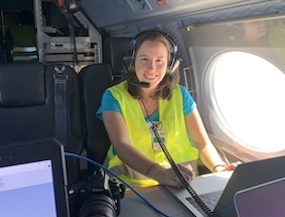



I also had the unique opportunity to join an ATOMIC flight on NOAA's WP-3D "Miss Piggy", one of the aircraft that is also used for hurricane hunting, on an overnight flight! We flew from 10 pm to 6 am under the light of the nearly full moon and "hunted" for shallow clouds in which we flew a series of legs in the boundary layer (500 ft), below cloud base (2000 ft), above cloud base (2800 ft), in-cloud (4500 ft), and above cloud top (8000 ft). There were a few bumps every now and then, flying at these low levels. The pilots adjusted our heading to maximize in-cloud sampling. After ascending to 25,000 ft for a HALO-style dropsonde circle, we descended back down to 500 ft for isotope sampling, then performed another cloud module. It was a longggg night, but a great experience and I enjoyed trackign the data and discussing intepretations with the science team. The sun was rising as we landed, making for a beautiful end to the flight.
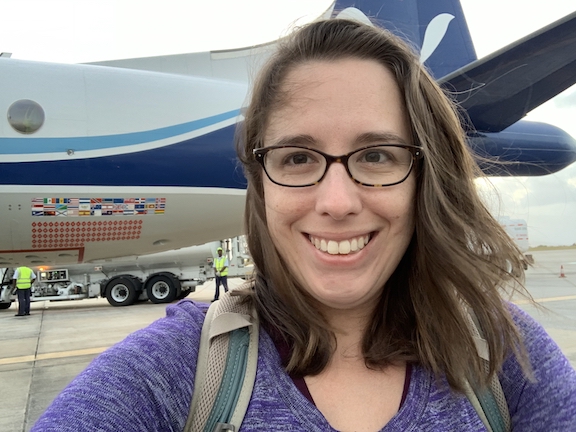
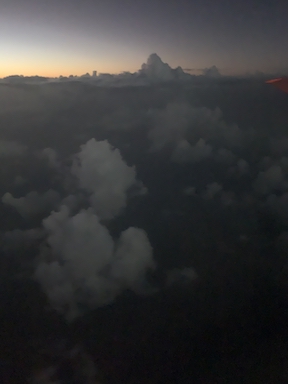
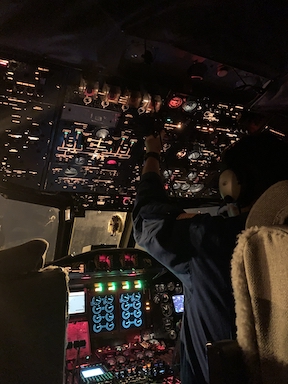
I also found a few spare moments to go swimming with sea turtles a few times at the beach.
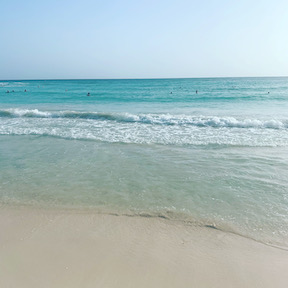
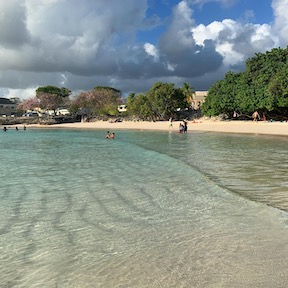
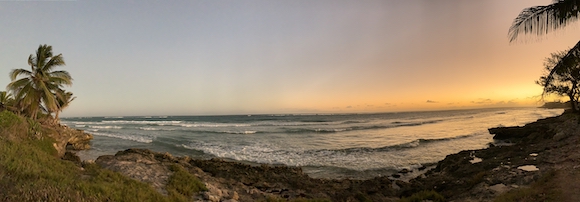 Read more
Read more
We welcomed a new graduate student to the group this semester! Caitlin Dirkes, a M.S. student at FSU, joined the group and will be analyzing process-oriented diagnostics of tropical cyclones in climate models and in observations. Caitlin received her Bachelors degree from FSU. Welcome, Caitlin! Learn more about our group here.
Several group members are presenting their research at the 100th American Meteorological Society Annual Meeting next week in Boston, MA. Prof. Wing is convening the sessions on Tropical Convection Tuesday and Wednesday afternoon in the Tropical Meteorology and Tropical Cyclones Symposium. Prof. Wing is presenting a talk on The Importance of Radiative Feedbacks in Tropical Cyclogenesis on Wednesday January 15 at 9:15 AM, a poster on Process-Oriented Diagnosis of Tropical Cyclones in CMIP6 HighResMIP Experiments on Wednesday afternoon (work led by Dr. Yumin Moon of University of Washington), and contributed to a poster led by Prof. Timothy Merlis of McGill University on Can Shifting Cloud Radiative Effects Influencd Tropical Stratificaton Changes? on Tuesday afternoon.
Graduate student Jake Carstens will present a poster on Pathways to Tropical Cyclogenesis in Rotating Radiative-Convective Equilibrium Simulations on Tuesday afternoon. Graduate student Evan Jones will present a poster on Representation of Tropical Cyclone Precipitaton in Global Reanalysis Datasets on Wednesday afternoon.
Read moreProf. Wing spent last week in Costa Rica to participate in the NSF-sponsored Organization of Tropical East Pacific Convection (OTREC) field campaign. The campaign seeks to test hypotheses to explain the control of convection over the tropical oceans by the large-scale environment. Though it also includes ground-based radiosonde launches, the centerpiece of OTREC is airborne observations with the NSF/NCAR HIAPER, a Gulfstream V jet. For OTREC, HIAPER is equipped with the HIAPER cloud radar and a dropsonde system. I had the exciting opportunity to fly on HIAPER for one of the research flights, which I described in a blog post on the OTREC blog. I also had the chance to fly on NOAA's P-3 with the NOAA Hurricane Research Division, which collaborated on several flights with OTREC. I described our flight to investigate a possible tropical disturbance in a blog post as well. On the days I wasn't flying, I participated in weather briefings and discussions with the other scientists and monitored the data coming in from the flights in real time. Field campaigns take a lot of hard work from all the participating scientists, instrument operators, logistics managers, funding agencies, and local partners, but there is no replacement for the valuable in situ data. It was an incredible opportunity for me to get out from behind my computer screen and experience tropical convection firsthand!
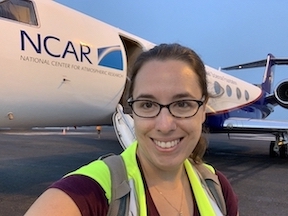
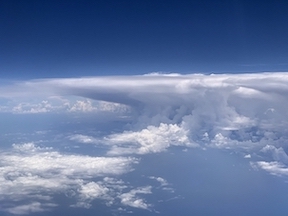
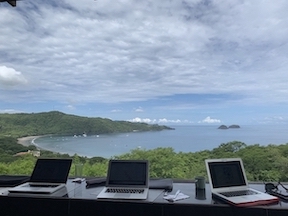
 Read more
Read more
Prof. Wing published a new paper today on "Moist static energy budget analysis of tropical cyclone intensification in high-resolution climate models" in the Journal of Climate. The article is part of the Process-Oriented Model Diagnostics Special Collection. In this paper, tropical cyclone (TC) intensification process are explore in six high-resolution climate models using process-oriented diagnostics that focus on how convection, moisture, clouds, and related processes are coupled. These diagnostics include budgets of column moist static energy and the spatial variance of column moist static energy, which allows for the quantification of the different feedback processes responsible for the amplification of moist static energy anomalies associated with the organization of convection and cyclone spinup, including surface flux feedbacks and cloud-radiative feedbacks. Composited over many storms at a similar intensity, the spatial variance of column moist static energy in a 10-degree box surrounding the TC increases with TC intensity (panel a, above). Both radiative and surface flux feedbacks contribute to the increase in column moist static energy variance with intensification. The radiative feedback contributes to TC development in all models, especially in storms of weaker intensity or earlier stages of development (panel d, above). Notably, the surface flux feedback is stronger in models that simulate more intense TCs (panels b,c, above). This indicates that the representation of the interaction between spatially varying surface fluxes and the developing TC is responsible for at least part of the intermodel spread in TC simulation.
Work is ongoing to develop an observation-based reference version of these diagnostics, using satellite and reanalysis data for observed tropical cyclones.
Read moreProf. Wing just returned from Oxford, United Kingdom, where she gave a keynote lecture on convective self-aggregation at the EXOCLIMES V conference, which is dedicated to the climates and climate evolution of exoplanets - planets from outside our solar system. One of the goals of the Exoclimes conference series is to bring together exoplanet scientists with researchers on fundamental atmospheric process on Earth, so that they can learn from each other. Exoplanet atmospheres challenge our assumptions about how convection behaves and it is fascinating to think about what processes remain fundamental and what would be different on a planet with a different size and mass, different solar insolation, different gases in the atmosphere, without a surface, etc... Could convective self-aggregation occur on in an exoplanet atmosphere? With the number of discovered exoplanets growing every year and the huge diversity in their properties, it certainly is a possibility! The conference was held at beautiful Merton College at the University of Oxford, one of the oldest colleges in the University (founded in the 1260s!). Everyday, meals were served in the college dining hall, which feels like one is at Hogwarts (indeed, some scenes from the Harry Potter movies were filmed at Oxford)!
Read moreProf. Wing and graduate students Jake Carstens and Catherine Stauffer recently returned from a two week trip to Italy to attend the 2nd ICTP Summer School on Theory, Mechanisms and Hierarchical Modelling of Climate Dynamics: Convective Organization and Climate Sensitivity at the International Centre for Theoretical Physics (ICTP) in Trieste, Italy. The summer school, co-directed by Prof. Wing, focused on the organization of convection in the tropics and its possible implications for climate sensitivity. Week 1 of the school featured introductory lectures and lab activities during which students analyzed aggregation in observations of tropical convection and examined simulations from the RCEMIP multi-model ensemble . The students were challengened to design and implement their own metric for aggregation, and despite having only a couple of days to work on this task, had some impressive results! Week 2 expanded the participation to include more than 20 leading experts who engaged in open debate concerning the mechanisms involved in aggregation of convection, the role of observations, the dependence of aggregation on SST, and whether sub-grid scale parameterizations need to represent convective organization.
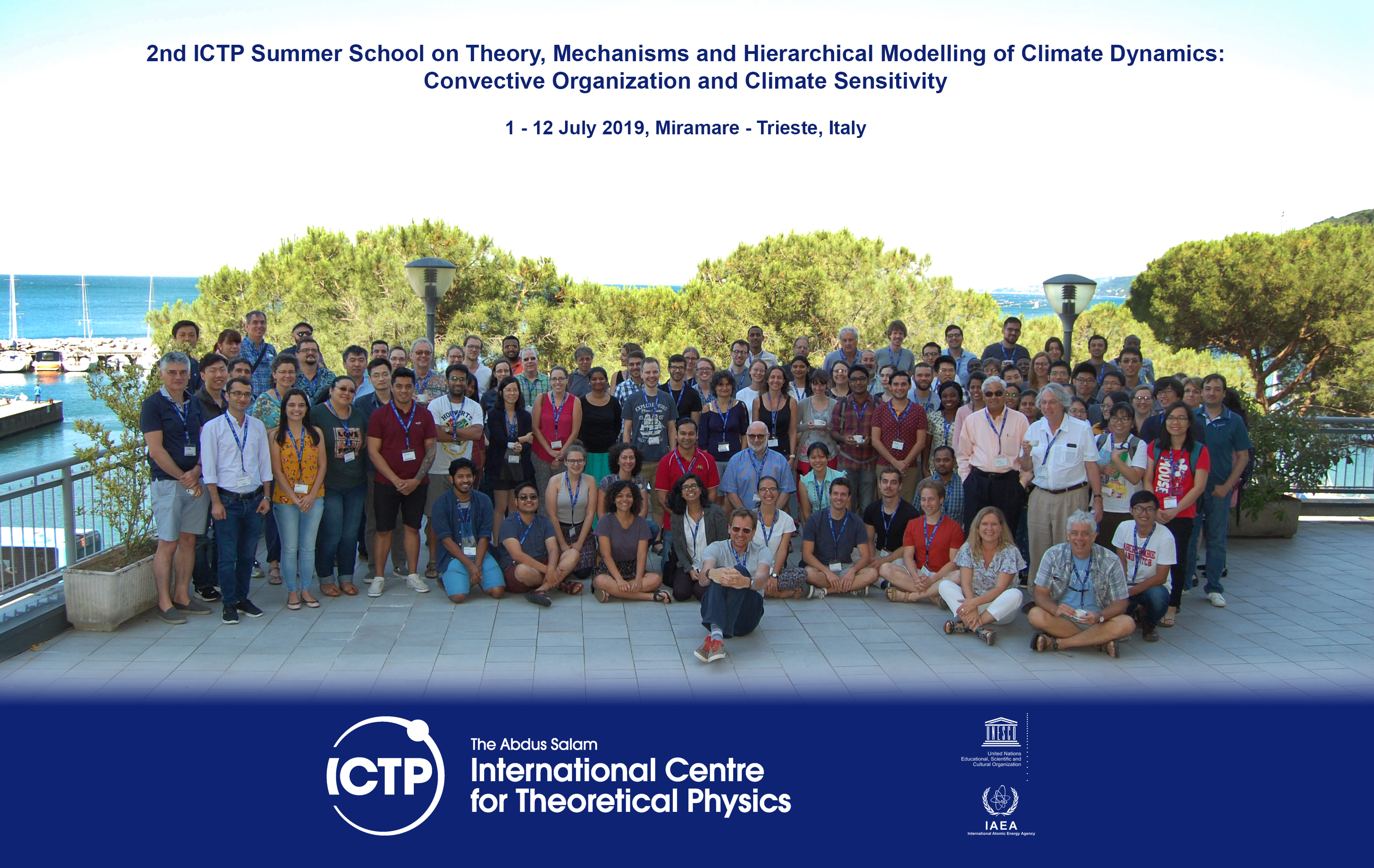
The school was a great success, bringing together a truly diverse group of 84 graduate students and postdocs from around the world and 24 experts on self-aggregation, convection, and tropical meteorology in a wonderful collaborative and collegial atmosphere. The beautiful setting of ICTP on the Adriatic Sea in Trieste facilitated a welcoming and friendly environment for discussion and collaboration, as well as providing for real time viewing of some dramatic thunderstorms!

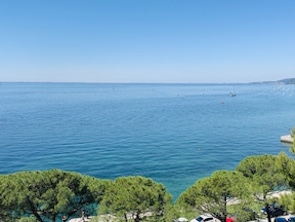
While most of the time we were busy lecturing, listening, learning, analyzing, or discussing convective aggregation, there were also plenty of opportunities for relaxing, including swimming in the Adriatic Sea, exploring the city of Trieste, eating a daily gelato, and visiting local wineries. On the last day of the school, an excursion to the Skojcan Caves in nearby Slovenia was organized. One of UNESCO's natural and cultural world heritage sights, the cave system features one of the largest known underground canyons in the world, which was truly a phenomenal wonder to see. We are all grateful for the opportunity to attend such a rewarding and enjoyable summer school!

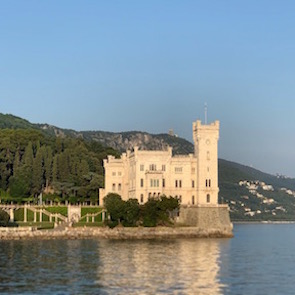
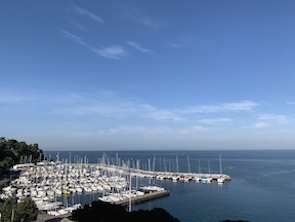
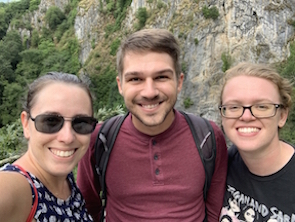
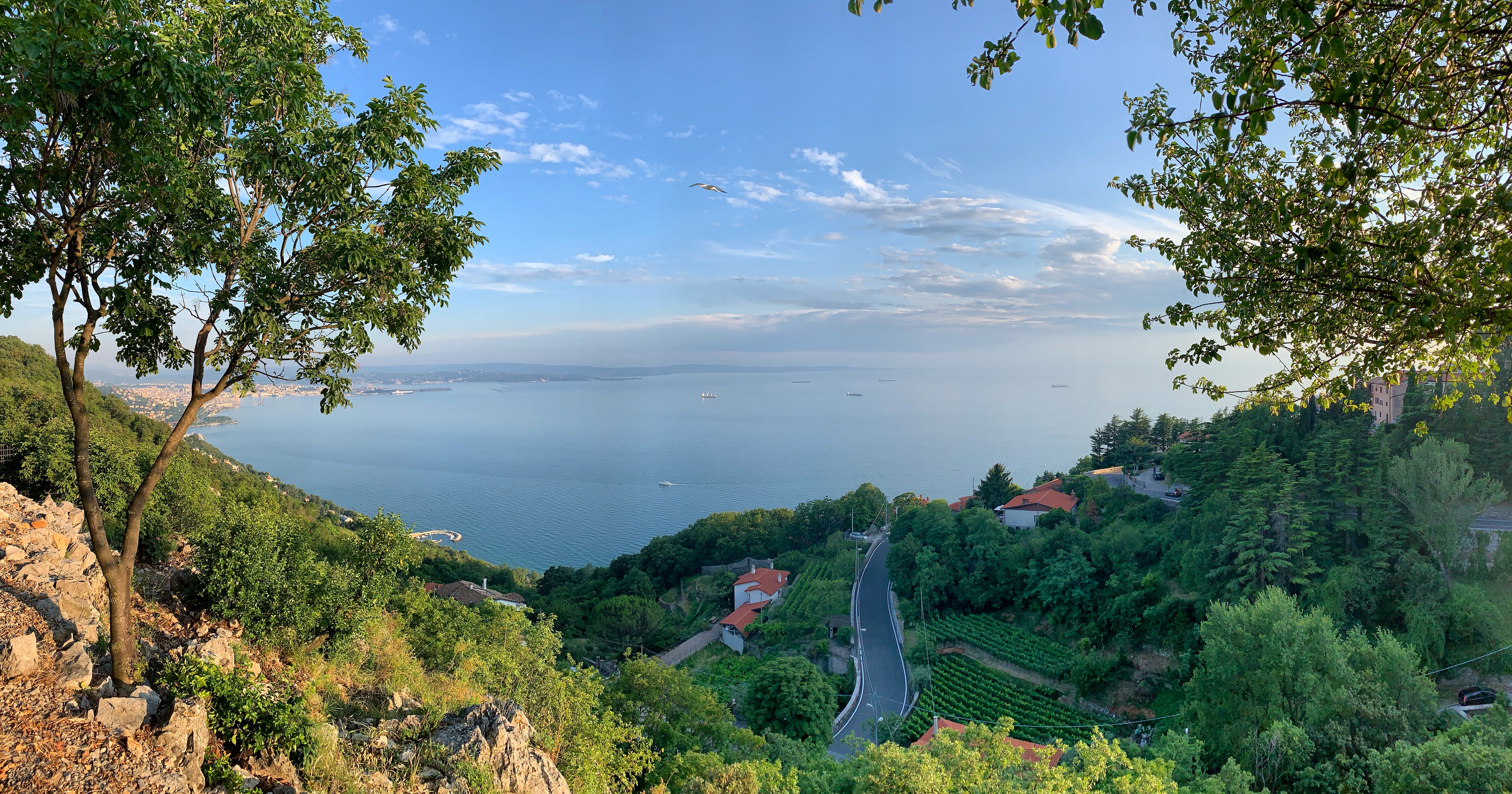 Read more
Read more
Prof. Wing was featured in a faculty spotlight by the FSU College of Arts and Sciences. This regular feature highlights faculty in the College, their backgrounds, and interests.
Read more